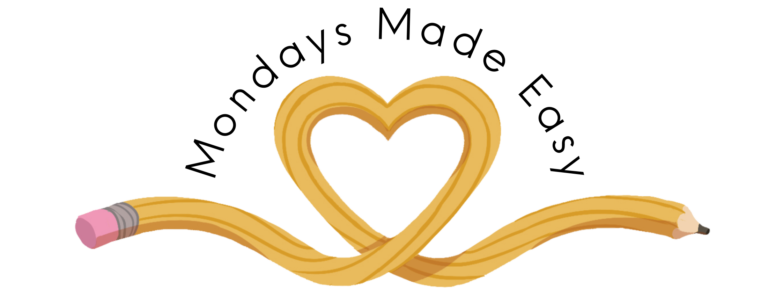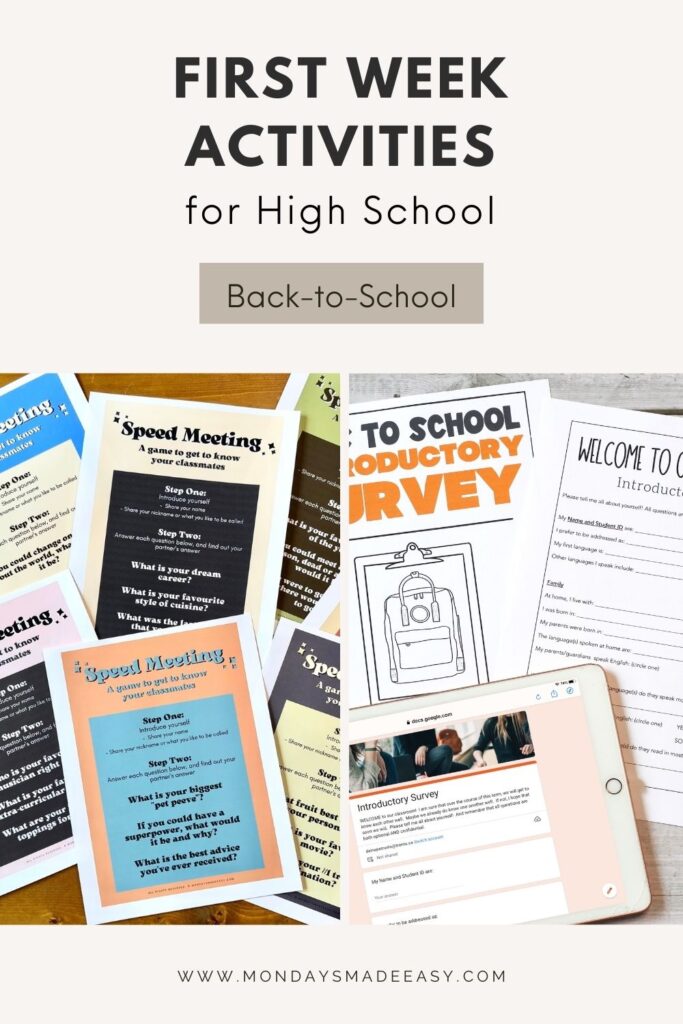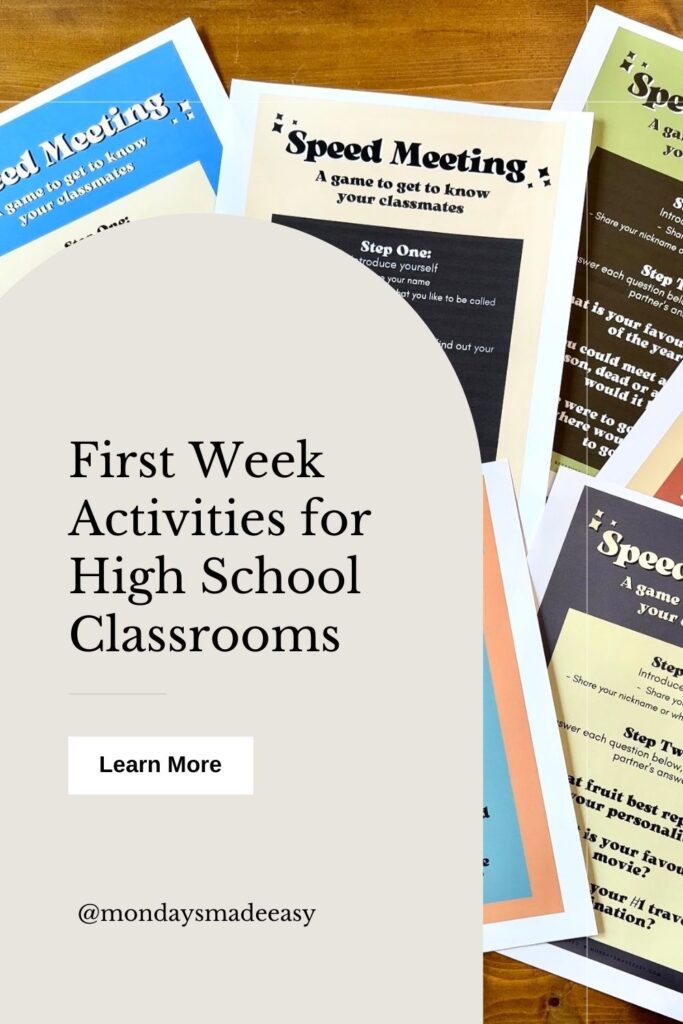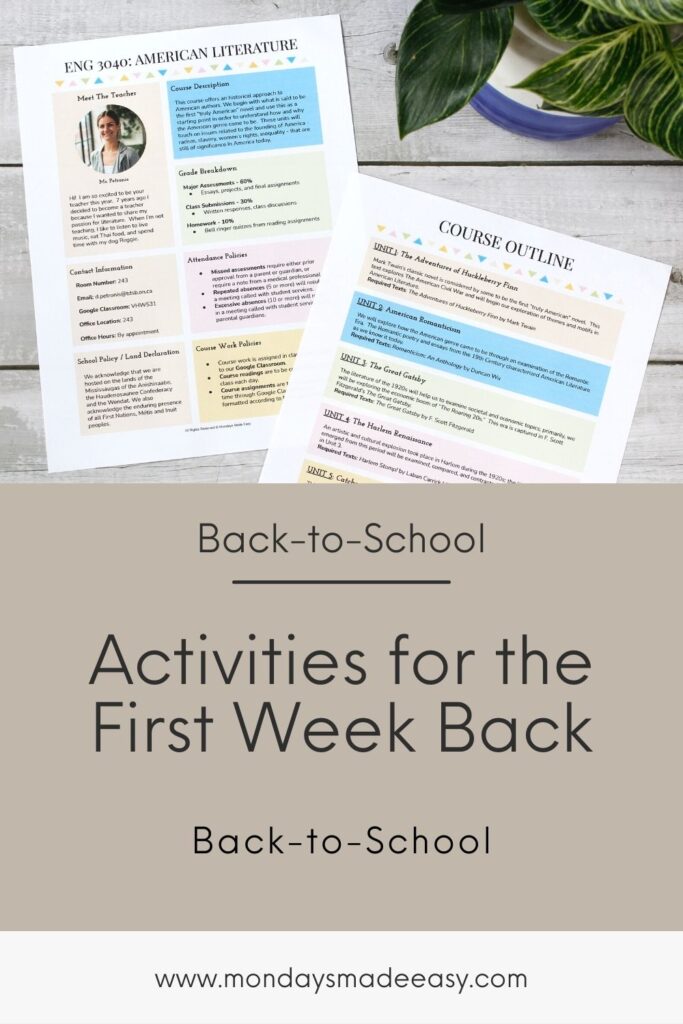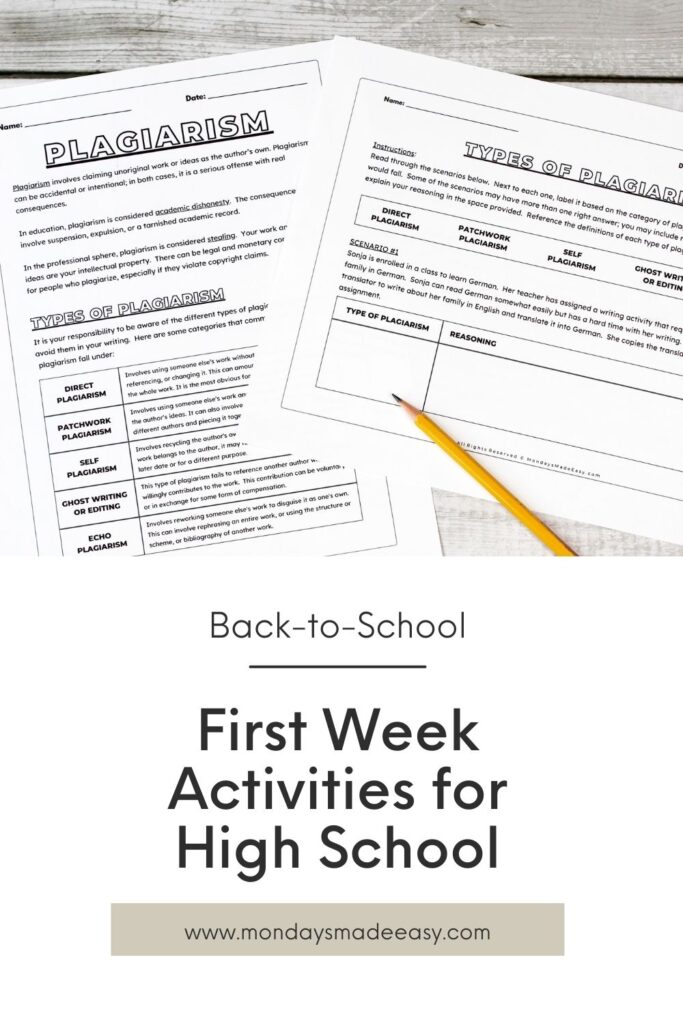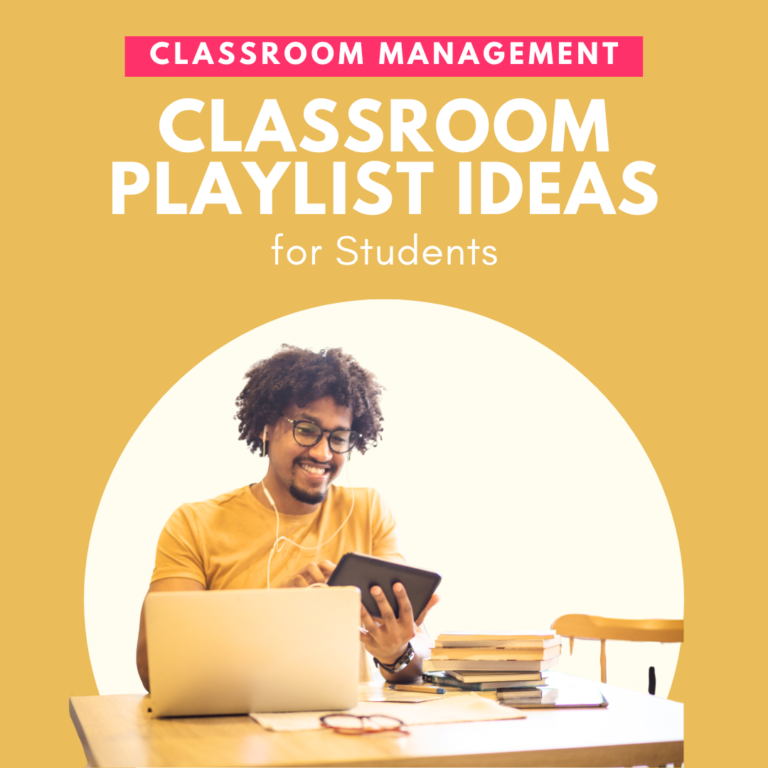With the back-to-school season quickly approaching, you might be wondering which first week of school activities would work best for your high school students. The lessons and activities that you choose to include in the first week of school are important for setting the tone in your classroom. It is also an opportune time to exchange important information with your students. Let’s not forget the influence of first-day icebreakers, too!
In this blog post, I’ll share the first week of school activities for high school classrooms. These activities will start your year on the right foot, and help you prepare for a successful and productive year ahead.
What do you do during the first week of school?
Depending on your subject area, you may have quite a bit of curriculum to cover over the course of the year. It can be tempting to dive right in! However, as we ease into a new school year after a long and restful summer, it can feel harsh to keep it strictly business on the first day back to school. This begs the question: what are the first week of school activities that we should be doing?
Although it might feel productive to tackle academics at the top of the year, it can benefit you to lay some groundwork first. By building a classroom community and establishing some classroom routines, you can create an environment conducive to learning. Don’t feel as though this time is “wasted;” instead, consider that many students change classes during the first week of school, and it will be more work to accommodate new students on your roster once you’re knee-deep in the curriculum.
Instead, I recommend a balance between fun activities, like first-day icebreakers, and lessons with an academic focus. Below you’ll find my day-by-day suggestions for the first week back to school!
Day 1: First-Day Icebreakers
It might seem unproductive to spend instructional time on icebreaker activities. But if you’re trying to cultivate a classroom culture where students engage with one another and participate in your lessons, then opportunities to engage really matter.
A strong sense of classroom community is your greatest asset in secondary school. The key to any safe, welcoming, and productive work environment is communication. This is why I introduce the first week of school activities such as icebreakers during the first day of school.
There are a number of easy, low-prep icebreakers that you can play to get students acquainted with one another. Some student favorites include icebreaker questions, “find your partner,” and “snowball” story writing. The great thing about all three of these games is that students are either speaking, listening, reading, or writing; this makes them a great introduction to your literacy program.
If you teach freshmen, a “Fun Fact Scavenger Hunt” can be a great way to help them get to know staff within the school. To prepare for this scavenger hunt, select a group of teachers and staff members that are likely to interact with freshmen students. Each staff member can share a fun fact about themselves to contribute to the scavenger hunt. Students can then work in groups or individually to identify the staff member that shared each fun fact.
You can read about more icebreakers for high school students here.
Day 2: First Week of School Activities to Get to Know Your Students
Now that students have spent some time getting to know one another, it is worthwhile to open up the dialogue with you, their teacher. The best way to do this is with a student information sheet. By asking the right questions, you can learn how to best support your new students. A “get to know your students” questionnaire will also help your new students feel seen in your classroom.
There are a variety of questions you can ask students during the first week of school activities. Each type of question serves a different purpose, whether it be to evaluate academic concerns or get to know your students on a personal level. Generally speaking, I like to ask students questions from five different categories: students’ identities, students’ families, academics and learning, extracurricular interests and responsibilities, and social-emotional learning question prompts.
This “get to know your students” questionnaire includes an editable question bank featuring questions from each category above. It also provides a ready-to-print student information sheet to gather information from your new students. To read more about important questions to ask your students during the first week of school activities, check out this blog post.
It is also beneficial for you to establish a connection with your students’ parents and guardians as early as possible. Reaching out at the start of the year will strengthen parent-teacher relationships and set you up for a successful first interaction with guardians. This is why the first week of school is a great time to send home a parent communication form.
Day 3: Explore and Schedule Your Syllabus
The first week of school is an important time to go over your syllabus with students. A syllabus contains plenty of vital information for new students in your classroom – it familiarizes them with your policies and gives them an idea of what they will learn in your course. This is especially important for students considering academic pathways or finalizing their class schedules. It can be helpful for them to know what they will learn in your classroom to make informed decisions about any changes they need to make.
One practice that works well with students is to schedule important dates into a digital planner or physical calendar. You might not know exactly when each assignment in your class will be due, but you likely have an idea about major dates throughout the school calendar. These include winter break, school assemblies, picture day, and professional development days. If you are working towards standardized testing in your classroom, it can also be helpful to make note of the dates on students’ calendars.
If you have yet to build your syllabus, check out these formal and visual syllabus templates.
Day 4: First Week of School Activities to Teach Plagiarism
When it comes to avoiding plagiarism, the best approach is a proactive one. No matter what subject you teach, plagiarism is a crucial concept to cover in your classroom. It eliminates any chance of a student plagiarising unknowingly and will make it easier to approach cases of plagiarism throughout the year. This is why teaching plagiarism is one of the great first week of school activities.
Teaching the different types of plagiarism can help with avoiding plagiarism in your students’ writing. Most students may know that copying someone’s work word-for-word is unacceptable. However, they may be unclear about other types of plagiarism. This lesson on the types of plagiarism is a great way to teach your students about the different ways that plagiarism can occur.
Having a policy for plagiarism will help with avoiding plagiarism in your classroom. Your policy can communicate your expectations surrounding plagiarism. It is also important to outline the consequences of plagiarism, too. You can use this editable plagiarism policy template in order to develop guidelines for your classroom. It is also helpful to include your policy in your course syllabus. I find it useful to have students sign a copy of our policy; by signing, they communicate that they have read and understood my expectations.
Day 5: First Week of School Activities to Foster Inclusivity
As students are welcomed to your classroom, it is crucial to create an inclusive and engaging environment that encourages them to see themselves as valued members. One of the first week of school activities that can foster this sense of belonging is an “Identity Collage.” In this activity, students are asked to bring in various items that represent their identities, such as photographs, objects, or symbols. They are then given the opportunity to share the significance of these items with their classmates.
Through this interactive exercise, students not only gain a deeper understanding of their own identities but also develop a stronger sense of connection with their peers. By recognizing and appreciating the diverse backgrounds and experiences within the classroom, this activity sets a positive tone for the school year. It also promotes empathy, understanding, and a genuine appreciation for one another.
If you haven’t utilized your classroom bulletin boards yet, you can display these identity collages on your walls. These displays will welcome students each day and allow them to see themselves reflected back to them in your classroom.
First Week of School Activities: Tying it All Together
While it may seem tempting to dive right into academics at the beginning of the school year, taking the time to consider your first week of school activities can prove beneficial in the long run. By prioritizing the establishment of a strong classroom community and implementing essential routines, you can cultivate an optimal learning environment. I hope these first-week-of-school activities will help you lay a solid foundation for the school year to come!
